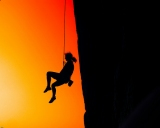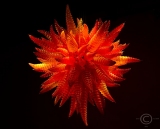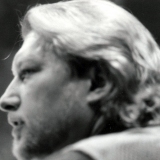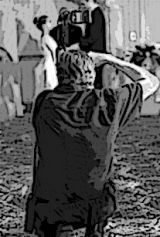- Forum
- General Discussion | Introductions | Off Topic Forum
- Photography General Discussion
- Back in the film photography days...
Back in the film photography days...
-
 Topic Author
Topic Author
- MYoung
- Master of the Lens
-
- Sony a7s II, Nikon D750
- Followers: 486
- Posts: 1625
-
Points:
12085
Post #268168
I'm happy to be jumping in during the digital age. Makes you wonder what's next?
Post #268172
-

- John Landolfi
- Super User
-
- Nikon D3S, D7100, Sony RX10, Canon G11, F4s, F2sb, RetinaflexIV etc, etc
- Followers: 1205
- Posts: 21605
-
Points:
40394
Post #268182
-

- effron
- Newbie
- Followers: 1623
-
Points:
129640
Post #268199
Why so serious?
-

- Henry Peach
- Apprentice
-
- I currently use a 5DII or Sony Nex-3 most of the time.
- Followers: 50
- Posts: 2925
-
Points:
16
Post #268227
I make about twice as many exposures, and deliver about twice as many finished photos since switching. In some ways digital is a lot easier, but that doesn't inspire me to be lazy. I just take that energy and spend it elsewhere to improve the photos. I don't feel like I'm being less deliberate at all. Instant feedback makes going for perfection much more achievable. With film I set up the shot to the best of my ability, took the shot, and accepted whatever came out. Now I set up the shot to the best of my ability, take a test shot, and refine. With film if I was chasing a shot in the crowd I'd try two or three, and move on. With digital I can chase until I'm sure I got the shot I'm after.
With film I had most of the developing and printing done by the lab. I did do my own BW, but all the color was just dropping off and picking up. That was very easy and quick. With digital I spend about a week processing the photos myself. It takes more effort, but the results are worth it. For all the scorn that is heaped upon "fixing it in Photoshop" it allows me to deal with problems I just ignored with film. A wedding day is not like a studio shoot. It's not always possible or practical to "get it right in the camera". For instance when the bride smudges her dress and starts to flip out, and wants to run the dress to the dry cleaner. With film there was nothing I could do. With digital I say "Don't worry, I can easily fix that in Photoshop." Stray hairs, pimples, missed razor stubble, lint, make-up smudges, artificial lighting color casts, etc... I also like how it's possible to easily burn and dodge on any photo. My college professor taught that 99% of photos could benefit from a little burning and dodging, and I agree completely.
-

- KCook
- Photo Elder
-
- Canon EOS 50D and Olympus E-P5
- Followers: 1325
- Posts: 5410
-
Points:
32913
Post #268234
In some ways digital is a lot easier, but that doesn't inspire me to be lazy. I just take that energy and spend it elsewhere to improve the photos.
My shooting habits have changed a lot with digital. But the results are an improvement, even though I no longer mimic Ansel Adams. Technology does count.
Kelly
-

- Rob pix4u2
- Photo Guru
- Nikon N90s & FE film & D90 and D90 digital bodies
- Followers: 196
- Posts: 4204
-
Points:
30
Post #268271
Remember to engage brain before putting mouth in gear
Rob Huelsman Sr.
My Facebook www.facebook.com/ImaginACTIONPhotography
Post #268353
I learned how to frame and compose photos in camera the way I wanted them to be, to focus manually and set a camera to get a decent exposure, etc. - those type skills that are needed to shoot film (with a mechanical camera anyway) and could be used shooting digitally. To me it seems like shooting a huge number of photos can get into a method of snapping rather randomly figuring something in all those shots will turn out, which is something I have a hard time understanding, especially thinking about the sheer number of photos.
Photography's always been a sideline for me, but when I did photos for sports marketing for a local team I would use maybe 8-10 rolls of 24 on a busy 2 game weekend, when there were pregame/intermission events going on. Many weekends I'd only use 2-4 rolls for my purposes. I think it depends on what type work you're doing or what event you're photographing how many photos you'd take in a particular time period, but I don't find shooting digitally that having more shots of something is necessarily an advantage.
Sometimes I nail it in one or get it in the first shot, or get it in 2-3 shots, and sometimes I take several shots of a subject; shooting digitally when I've gone beyond that I seem to just end up with more than one of practically the same shot. Maybe it varies depending on a photographer's style and experience and I think I use the same skills I developed shooting film, but I don't think shooting more photos necessarily would give you more good photos.
Sharon
-

- Henry Peach
- Apprentice
-
- I currently use a 5DII or Sony Nex-3 most of the time.
- Followers: 50
- Posts: 2925
-
Points:
16
Post #268358
Post #268386
Henry Peach wrote: Before film collodion plate was the popular process. The photographer had to make their wet plates in the field right before exposure, and process them soon after. Besides a huge camera and tripod, they had to carry glass plates, a chemistry lab, and some sort of darkroom. When film came along some photographers said it was too easy, not as good quality, it would lead to less creativity, anyone could be a photographer, etc... Others said "Thank goodness! My back was killing me!"
It fulfilled all those prophecies with the snapshot, but the 20th century was also a golden age for photography of all kinds. Easy technology makes it so anyone can participate. Some people are always willing to work harder, and that seems to have more bearing on success than particulars of technology or technique.
Well that and that process would get you in trouble with the EPA now. Then there were the tin and sliver types, again more fun with chemicals.
Post #268400
Seems like I've read about more than one modern day version of a darkroom or large view camera on wheels - sounds sort of like riding around in a Winnebago with a darkroom. Guess the saying's true with some things, that what goes around comes around.
Sharon
-

- Stealthy Ninja
- Moderator
-
- Fuji X stuff and a 1DsIII for some reason
- Followers: 982
- Posts: 16300
-
Points:
6837
Post #268402
Post #268404
You will hear me say it now.Stealthy Ninja wrote: Too much to read here. Someone give me the short version. Are we saying film sucks or what?
There is really not much I miss about film. I will talk about it but only to demonstrate how much better life is with digital.
-

- Stealthy Ninja
- Moderator
-
- Fuji X stuff and a 1DsIII for some reason
- Followers: 982
- Posts: 16300
-
Points:
6837
Post #268407
Joves wrote:
You will hear me say it now.Stealthy Ninja wrote: Too much to read here. Someone give me the short version. Are we saying film sucks or what?
There is really not much I miss about film. I will talk about it but only to demonstrate how much better life is with digital.
I only shot film with point and shoot cameras. I still know it sucks.
-

- Happy Snapper
- Photography Hooked
-
- Nikon D810 and Nikon D4s
- Followers: 89
- Posts: 750
-
Points:
1828
Post #268416
Gripped Nikon D810 --- Sigma 70-200mm f/2.8 --- Sigma 10-20mm f/4 --- Nikon 50mm f/1.4 --- SB600
- Forum
- General Discussion | Introductions | Off Topic Forum
- Photography General Discussion
- Back in the film photography days...
Latest Reviews
The Fujifilm XT5 is a 40MP mirrorless camera capable of 6.2K video at 30p. With those specs, it’s an ideal choice for photographers needing a camera to pull double duty for imaging and video.
The Canon EOS R100 is an entry-level mirrorless camera introduced in 2023. But just because it’s an entry-level camera doesn’t mean it’s a bare-bones camera. Find out why in this review!
Nikon’s retro-looking Nikon Zfc is anything but retro. Under its classic body is a host of features and amenities that make it a worthwhile compact mirrorless camera for 2024.
The Canon EOS R50 is one of the newest R-system cameras from Canon. Is it worth your money? Find out all the details you need to know in this comprehensive review.
Forum Top Posters
-
1TCav 9 posts
-
2CharleyL 6 posts
-
3Sawyer 5 posts
-
4Tristan R 3 posts
-
5AstralArti... 3 posts
-
6Hassner 3 posts
-
7Moe 3 posts
-
8Stanly 3 posts
-
9Randy Shaw 3 posts
-
10db3348 3 posts
Latest Articles
Urban photography is a genre showcasing features in urban settings. You can photograph people, architecture, mass transit, and many other subjects. Learn how to do so in this guide!
The Nikon D850 might be an older DSLR, but it was ahead of its time when it debuted in 2017. That means it still has plenty of firepower to compete with today’s powerful mirrorless cameras.
The best beginner camera isn’t the same for everyone. That means having choice is of the utmost importance. In this guide, explore five excellent beginner camera options for 2024 and beyond.
Child portrait photography is a unique undertaking requiring special skills and talents to get the best results. Start mastering this photography niche with these essential tips!
The Fujifilm XT5 is a 40MP mirrorless camera capable of 6.2K video at 30p. With those specs, it’s an ideal choice for photographers needing a camera to pull double duty for imaging and video.
Using leading lines in photography helps improve the composition by drawing viewers in and leading their eye from the foreground to the background. Explore some fine examples of this in this guide!
The Insta360 has one of the best lineups of action cams and 360-degree cameras. With these Insta360 accessories, you can elevate your photography and videography game!
Creating impactful photos of landscapes depends on many factors, not the least of which is your talent behind the lens. This guide explores other elements required for the best product.
















